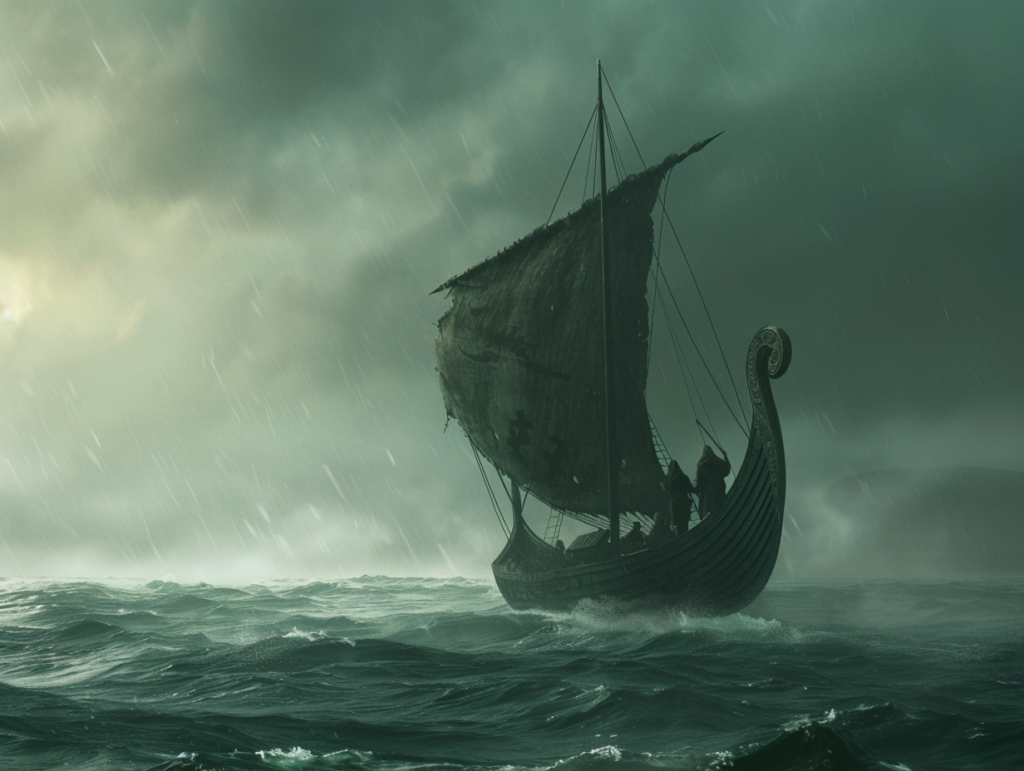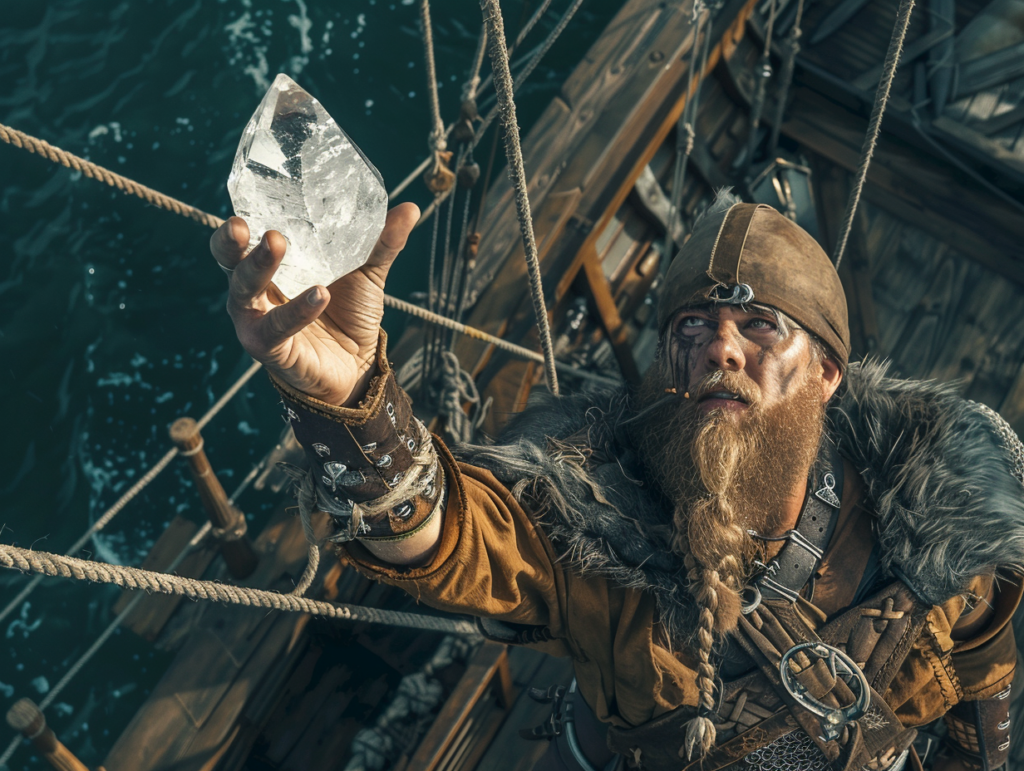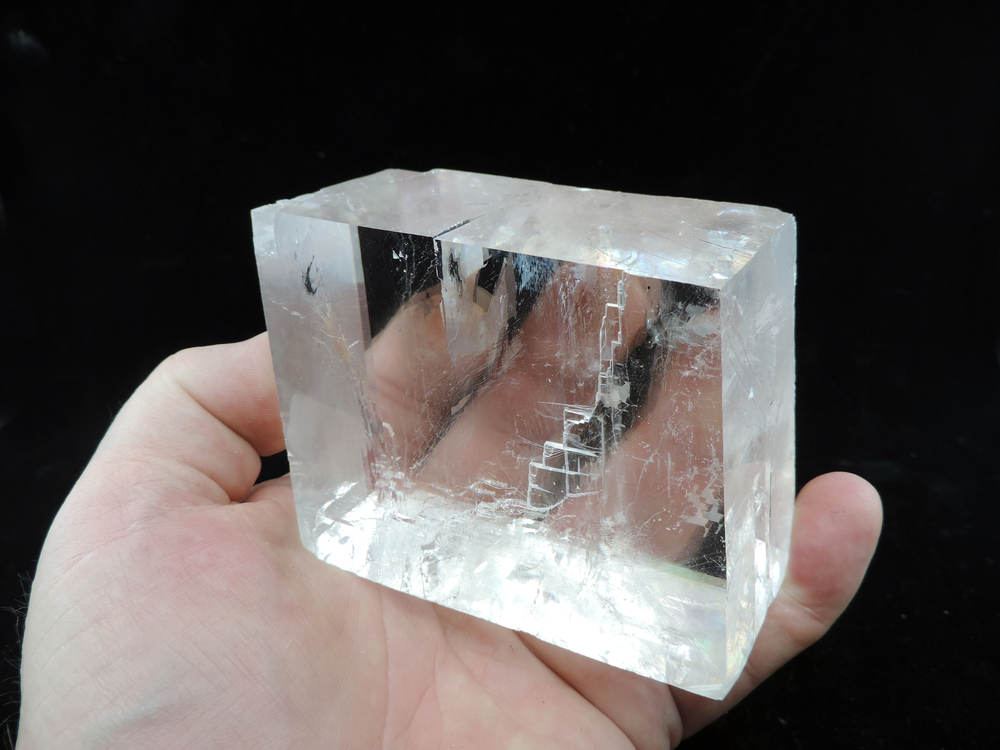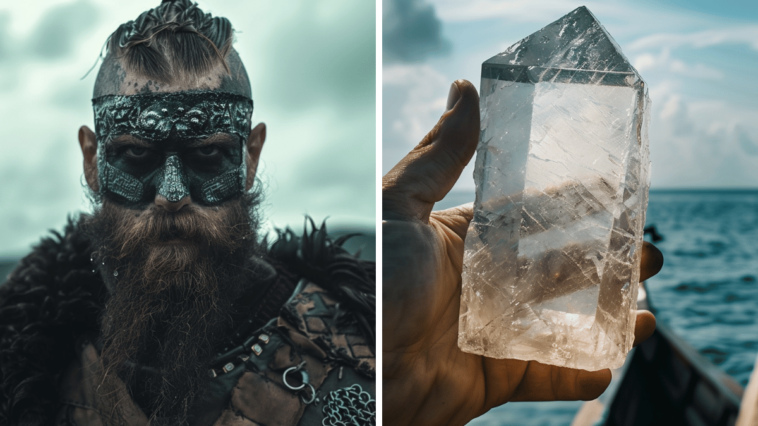Viking sunstones, or “sólarsteinn” in Old Norse, have fascinated historians, archaeologists, and navigators for years due to their mythical status and intriguing properties.
While the exact nature and use of these sunstones remain partly speculative, they are believed to have been a navigational aid for Viking mariners during their extensive voyages across the North Atlantic, long before the introduction of the magnetic compass in Europe.

The idea of the sunstone is primarily derived from medieval texts and sagas, with one of the most notable references found in the saga of King Olaf, where a sunstone is mentioned as a means to locate the sun in a completely overcast sky.
Scholars hypothesize that these stones could have been a type of crystal, possibly Icelandic spar (a clear form of calcite), known for its property of polarizing light. By holding the stone up to the sky, Vikings might have been able to determine the sun’s position by observing the patterns of light, even on cloudy days or when the sun was just below the horizon at twilight.

The working principle behind this is the optical phenomenon of polarization, where the stone could filter and polarize sunlight, splitting it into two distinct beams. By rotating the stone until the two beams appeared equally bright, the Vikings could ascertain the direction of the sun and, consequently, their bearing. This method would have been particularly useful in the northern latitudes, where the Vikings sailed far from land and where the magnetic compass was not yet known.
In addition to sunstones, Vikings are also thought to have used other navigational tools and techniques, including the stars, the color of the ocean, and the flight patterns of birds. However, the concept of a Viking compass, often associated with the so-called Uunartoq disc or Greenland disc, suggests a more direct form of navigation. This disc, believed to be a sun compass, could have been used to determine direction by casting a shadow with a central gnomon. By knowing the time of day and the season, Vikings could use the length and direction of the shadow to navigate.
While archaeological evidence directly supporting the use of sunstones and sun compasses is limited, these navigational aids capture the imagination, highlighting the Vikings’ remarkable seafaring skills and their ability to traverse vast distances across the open sea.
More Interesting Facts About Icelandic Spar

- Optical Properties: Icelandic spar is renowned for its optical clarity and the unique property of double refraction. When you look through the crystal, it splits the light into two rays, creating a double image of anything viewed through it. This property, known as birefringence, was pivotal in the study of light and optics.
- Discovery of Polarization: The double refraction property of Icelandic spar was crucial in the discovery of light polarization by the Danish scientist Rasmus Bartholin in 1669. It helped scientists understand that light waves can oscillate in different directions.
- Historical Use in Navigation: As mentioned, Icelandic spar is believed to have been used by Vikings for navigation. By exploiting its ability to polarize light, sailors could potentially locate the sun’s position even on cloudy days or when the sun was just below the horizon, aiding in their remarkable navigational feats across the North Atlantic.
- Geological Formation: Icelandic spar is a form of calcite, a mineral made of calcium carbonate. It forms in clear, large crystals under certain geological conditions, often found in basaltic and other volcanic environments. Iceland is famous for its deposits of exceptionally clear calcite crystals, hence the name “Icelandic spar.”
- Scientific and Industrial Uses: Beyond its historical and optical significance, calcite, including varieties like Icelandic spar, has various applications in science and industry. Its birefringent property is used in polarizing microscopes, optical instruments, and for enhancing the brightness of Liquid Crystal Displays (LCDs). Calcite can also be used in the manufacture of cement and as a balancing material in concrete.


